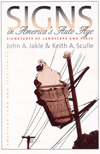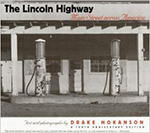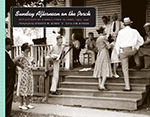Signs in America's Auto Age
“Here speak the mute heralds of roadside America, the visual punctuation of modern national landscape.”—John Stilgoe, Harvard University
Signs orient, inform, persuade, and regulate. They help give meaning to our natural and human-built environment, to landscape and place. In Signs in America’s Auto Age, cultural geographer John Jakle and historian Keith Sculle explore the ways in which we take meaning from outdoor signs and assign meaning to our surroundings—the ways we “read” landscape. With an emphasis on how the use of signs changed as the nation’s geography reorganized around the coming of the automobile, Jakle and Sculle consider the vast array of signs that have evolved since the beginning of the twentieth century.
Using a rich archives of trade and professional magazines along with existing academic literature and the landscape itself, Jakle and Sculle offer compelling images and commentary on commercial and regulatory signs in both downtown and roadside settings. They explore how reading and displaying signs contribute to our sense of community and our sense of self, the aesthetics of signs, and how, through regulation, Americans have responded to signs as both beauty and blight in their landscape.
Broad in scope, and significant for its consideration of both the look and meaning of signs in the context of twentieth-century history and society, Signs in America’s Auto Age will appeal to those with an interest in American cultural geography, urban history, and popular culture.





